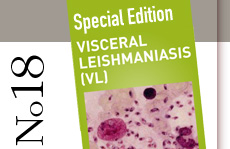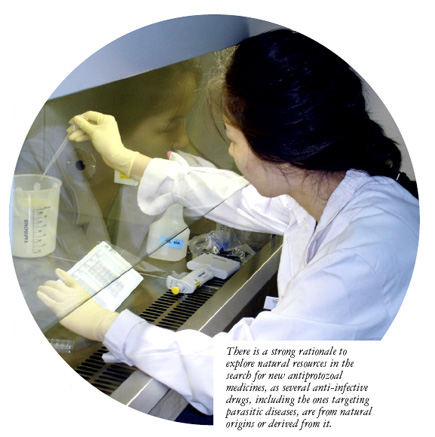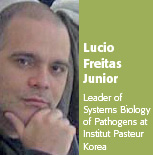 |
|
|
|
|


Drug discovery is basically a three-stage process consisting of screening, lead selection, and lead optimisation (LO). It is the first step on an uncertain journey towards getting medication to those who need it. The objective of these initial stages is to find a drug candidate i.e. a compound that can enter the clinical development process (clinical trials) after being evaluated for safety and efficacy in animals (preclinical development).
During the first stage, screening, chemical entities are tested for their ability to inhibit parasitic growth - Leishmania spp. in this case. Essentially it is a numbers’ game: the more tests carried out, the greater the possibility of finding one entity which is potentially useful – a ‘hit’. Therefore, to improve the chances of success, it is crucial to have access to large collections of chemical entities, known as ‘chemical libraries’.
In the case of VL, a big challenge is that screening has traditionally been painstakingly slow, each entity having to be tested individually. DNDi has therefore adopted a resourceful and pragmatic approach involving various strategies and partnerships to feed the pipeline and deliver suitable hits to the LO programme (below). Advances which would help the VL screening stage could be made on two levels: ever-more focused chemical libraries; and technological advances to enable compounds to be tested in greater number and more quickly.
First HTS assays
A technique known as high-throughput screening (HTS) has been used since the 1990s. This approach makes it possible to analyse thousands of compounds in a few weeks. A challenge in the field of screening for compounds active against the relevant stage of the Leishmania parasite – an intracellular form, however, has been the throughput limitation of the available assays (5-15 compounds for ‘conventional’ in vitro screening per week).

In May 2008, DNDi initiated a partnership with the Institut Pasteur Korea (IPK), which has been developing and validating a highthroughput visual screen to be used for screening compounds against the intracellular form of Leishmania. The project is at a stage where a 200,000 compound library is being screened. If successful, this will represent a major breakthrough in the development of drugs for the most neglected diseases as the first HTS assay against the intracellular, amastigote stage of leishmania parasites. This technology could then be extended to other intracellular parasites such as T. cruzi, the etiological agent of Chagas disease. In light of these ongoing screening advances, DNDi hopes to be soon in a position to identify far greater numbers of hits than in the past. Following preliminary assessments, those selected as having lead-like properties (hit to lead phase) will then be delivered to the visceral leishmaniasis lead optimisation consortium in India.
Summary of screening strategies adopted by DNDi and its partners| Low Hanging Fruits | Small series of compounds on which some tests have already been performed | - Literature searches - Library screening - Abandoned programmes | Institut de Recherche pour le Développement (IRD), France |
| Specific or focused libraries | Collection of compounds with specific biological or chemical characteristics | Quinolines, Cysteine protease inhibitors, DHFR inhibitors, etc. | GlaxoSmithKline (GSK), Spain |
| Natural products | Plant and marine extracts | Nature (regional) | Kitasato Institute, Japan Eskitis Institute, Australia |
| Large size libraries | Libraries containing thousands of compounds | Many pharmaceutical companies, biotechs, academic institutions, and/or through other PDPs | Institut Pasteur, Korea (IPK) |
All of these strategies have the common objective of identifying and assessing hits, and delivering those with lead-like properties to the next stage : lead optimisation. | |||
 “Aiming to develop new antileishmanials, we have adapted Leishmania donovani intramacrophagic amastigote culture to a high-content/highthroughput screening assay as a cellular model for leishmaniasis. This should considerably speed up the drug discovery process and allow us to screen a large number of compounds in complex phenotypic whole cell assays, which previously would not have been possible.”
“Aiming to develop new antileishmanials, we have adapted Leishmania donovani intramacrophagic amastigote culture to a high-content/highthroughput screening assay as a cellular model for leishmaniasis. This should considerably speed up the drug discovery process and allow us to screen a large number of compounds in complex phenotypic whole cell assays, which previously would not have been possible.”